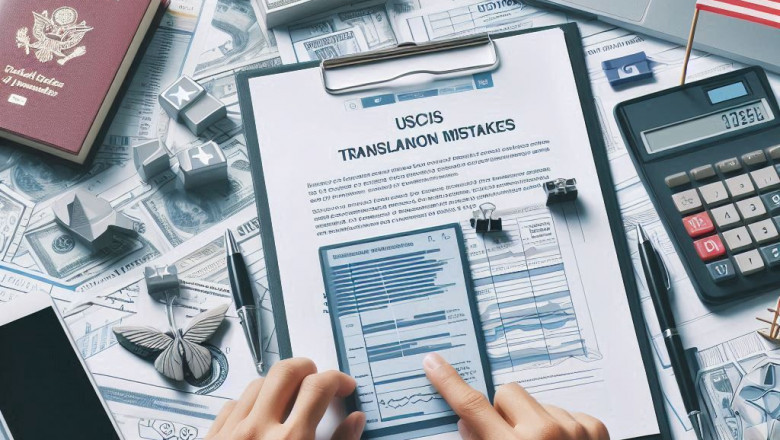views
If you're submitting documents to U.S. Citizenship and Immigration Services (USCIS), you probably already know that any foreign-language documents must be translated into English. However, many people make mistakes in this process that can lead to delays, requests for evidence (RFE), or even denials. In this article, we’ll go over some of the most common USCIS translation mistakes and how to avoid them.
1. Using an Unqualified Translator
USCIS requires that translations be completed by someone who is fluent in both English and the original language. The translator must also provide a certification statement confirming their ability to translate accurately. Many people try to translate documents themselves or ask a friend who speaks English, but this can lead to errors. It’s best to use a professional translator who is familiar with USCIS requirements.
2. Missing a Certification Statement
Every translated document submitted to USCIS must include a certification statement. This statement should include:
- A declaration that the translation is accurate and complete.
- The translator’s full name and signature.
- The translator’s contact information.
If this certification is missing or incomplete, USCIS may reject the translation. Professional translation services typically provide this statement, so if you're using one, make sure it's included.
3. Inaccurate or Incomplete Translations
USCIS requires an exact translation of the original document. This means every name, date, and stamp must be included. Some people assume that minor details, such as handwritten notes or seals, can be left out. However, missing any part of the original document can lead to problems. Even formatting matters—documents should closely resemble the original layout to avoid confusion.
4. Incorrect Name or Date Formatting
Names and dates must match official records. One common mistake is inconsistently spelling names or using different formats for dates. For example, many countries use the day-month-year format, while the U.S. uses month-day-year. A mistake here could cause issues with your USCIS application. Double-check that all names and dates match exactly how they appear in official documents.
5. Using Google Translate or Automated Tools
While translation apps are improving, they are still not reliable for official USCIS documents. Automated tools often misinterpret context, grammar, and cultural nuances. USCIS expects human-quality translations that are clear and precise. Relying on a machine-generated translation can lead to costly delays.
6. Submitting an Illegible or Poor-Quality Translation
USCIS must be able to clearly read the translation. If the translated document is blurry, contains unclear handwriting, or has formatting issues that make it difficult to read, USCIS may reject it. Always ensure that your translation is neatly typed and properly formatted.
7. Forgetting to Translate Seals, Stamps, and Notes
Official documents often contain stamps, seals, or handwritten notes that provide important details. Many applicants assume these do not need translation, but USCIS requires all elements of the document to be included. If the text within a stamp or seal is unclear, the translator should indicate it with a note such as "[illegible stamp]" rather than omitting it.
8. Not Keeping a Copy for Your Records
After submitting your translated documents, keep a copy for yourself. USCIS may request additional information, and having a copy on hand can help you respond quickly. It’s also useful for future applications where the same documents might be needed.
9. Ignoring Specific USCIS Requirements
USCIS has strict guidelines for translations, but different types of applications may have additional requirements. For example, translating a birth certificate may require special attention to formatting and content. Always check USCIS guidelines or consult with an immigration expert to ensure compliance.
10. Assuming a Notarized Translation is Required
Many applicants believe that all translations must be notarized, but USCIS only requires a certified translation, not a notarized one. However, if you’re submitting documents to other agencies (such as a state licensing board), a notarized translation might be required. Understanding the difference can save you time and money.
Final Thoughts
USCIS document translation may seem straightforward, but small mistakes can lead to big problems. We always recommend using a professional translation service that specializes in USCIS documents to ensure accuracy. Taking the time to double-check everything before submission can save you unnecessary delays and stress.
If you're unsure about your translation, it’s always best to seek professional help. A little extra effort upfront can make a big difference in your immigration process.






















Comments
0 comment